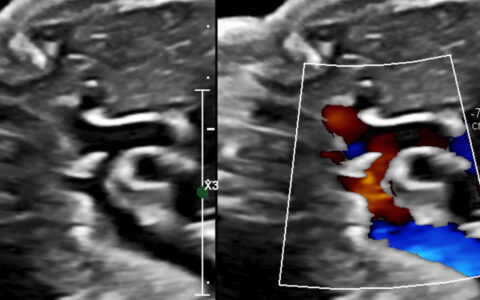Years of research at Vanderbilt University Medical Center have pointed to highly reactive lipid metabolites, called isolevuglandins, as key players in cardiovascular disease.
Isolevuglandins contribute to oxidative stress-related injury and promote cytotoxic amyloid formation, according to the latest Vanderbilt study in the Journal of the American College of Cardiology. The study suggests scavenging isolevuglandins could be therapeutic.
“We believe that these reactive lipid mediators of oxidative stress are a potential new target for preventing atrial fibrillation,” said senior author Katherine Murray, M.D., a professor of cardiology at Vanderbilt.
“Mopping Up” Isolevuglandins
Isolevuglandins are so reactive that they cannot be detected free floating in biologic fluids or tissue. Instead, Murray and colleagues measured formation of harmful adducts containing them. The researchers found both mechanically stretched atrial cells and hypertensive mice developed isolevuglandin adducts. As a result, the mice also developed atrial fibrillation.
In both models, adding a novel scavenger molecule called 2-HOBA (2-hydroxybenzylamine) prevented isolevuglandin adduct formation. Mice treated with 2-HOBA no longer developed atrial fibrillation.
“The scavengers quite selectively mop up isolevuglandins,” Murray explained. The therapeutic approach is unique in that it targets downstream effects of oxidative stress, rather than the production of reactive oxygen species, she added.
Amyloid Broadens Applications
Hypertensive mice in the study also developed preamyloid oligomers in the atria, which Murray’s team previously showed can occur in human atrium where they are linked to hypertension. Isolevuglandins accelerated the process.
Said Murray, “This has also been shown for beta-amyloid, the pathologic protein responsible for Alzheimer’s. Isolevuglandins are detected in multiple diseases linked to oxidative stress.” Treatment with 2-HOBA prevented amyloid accumulation in the mice, while also reducing atrial fibrillation.
“Isolevuglandins are detected in multiple diseases linked to oxidative stress.”
The findings broaden the therapeutic potential of isolevuglandin scavengers, which Vanderbilt researchers have already found could reverse damage caused by oxidative stress in atherosclerosis and hypertension. Additional studies are ongoing to test their efficacy in pulmonary hypertension, Murray said.
A Phase 2 Clinical Trial in Humans
An ongoing clinical trial is testing whether 2-HOBA, as a dietary ingredient, might also prevent atrial fibrillation in humans. The double-blind, randomized, placebo-controlled study is led by Gregory Michaud, M.D. and Benjamin Shoemaker, M.D., both of Vanderbilt. Participants in the study wear a smartwatch for constant arrhythmia monitoring.
“The trial will determine whether or not 2-HOBA reduces atrial fibrillation in the month following an [atrial fibrillation] ablation procedure, which we know is a time period when oxidative stress is high,” Shoemaker said. “We’re also collecting blood samples to measure isolevuglandin adducts and to extract DNA for genetic susceptibility studies.”
Genetic Susceptibility
Toward that aim, Murray’s own laboratory has embarked on studies to better understand genetic risk underlying atrial fibrillation.
“Genomewide association studies and mouse work suggest deficiency in PITX2 increases risk for atrial fibrillation,” she said. The gene encodes a transcription factor that promotes an antioxidant gene program in the setting of tissue injury. She’s currently studying whether mice deficient in PITX2 benefit from isolevuglandin scavenging by 2-HOBA.
“It’s clear isolevuglandins are mediators of the significant injury that is caused by oxidative stress. Now, we also know they rapidly accelerate the development of amyloid,” Murray said. “We and others still investigating all of the different things isolevuglandins can do.”
“It’s clear isolevuglandins are mediators of the significant injury that is caused by oxidative stress. Now, we also know they rapidly accelerate the development of amyloid.”





